The Independent's journalism is supported by our readers. When you purchase through links on our site, we may earn commission.
Jimi Hendrix’s London: how the city shaped the final five years of his life
The urban legend linking Hendrix with the ‘Parakeet Plague’ may be false, but he clearly had deep connections with the capital. Justin Sablich explores this legacy, starting at the guitarist’s former flat
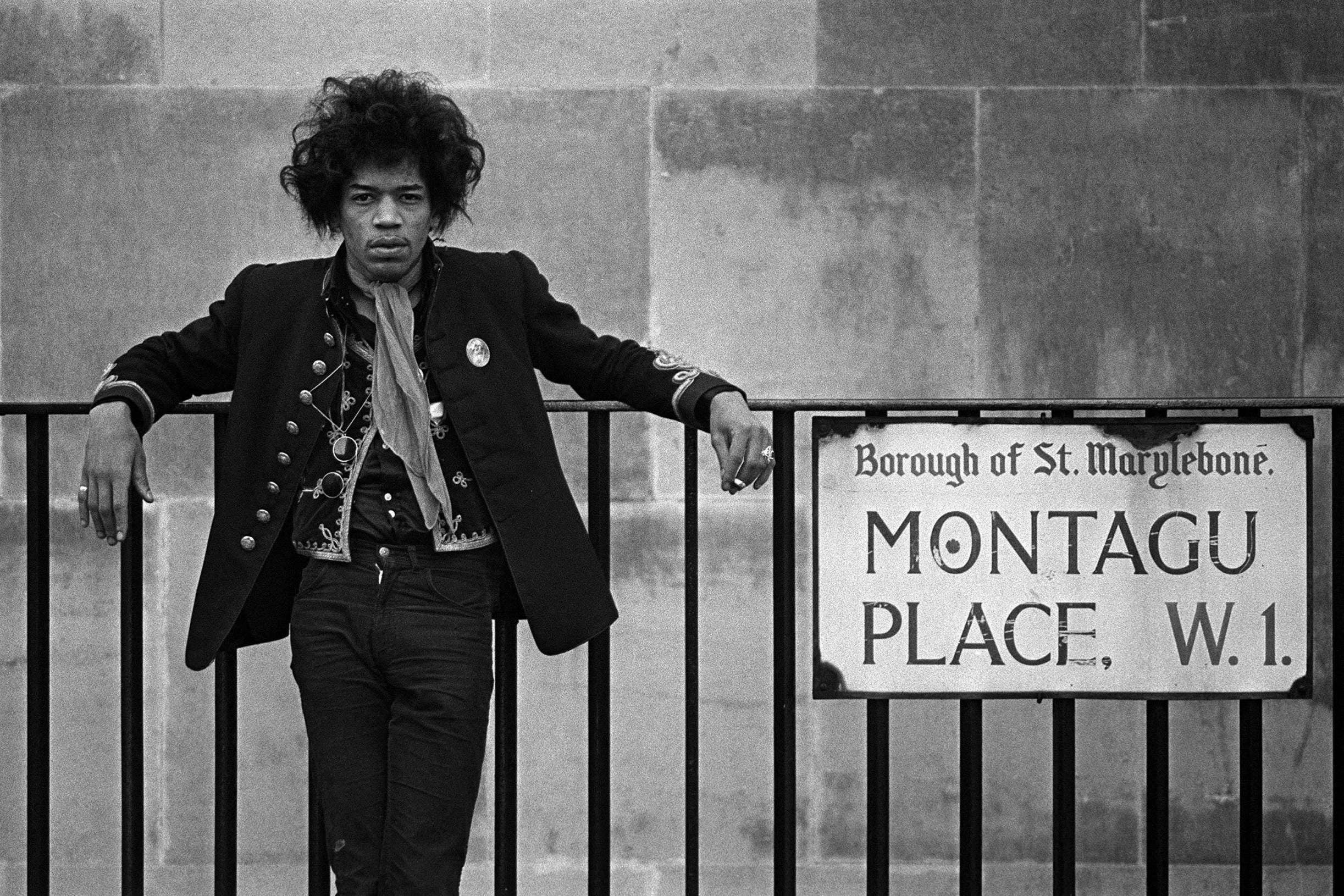
Your support helps us to tell the story
From reproductive rights to climate change to Big Tech, The Independent is on the ground when the story is developing. Whether it's investigating the financials of Elon Musk's pro-Trump PAC or producing our latest documentary, 'The A Word', which shines a light on the American women fighting for reproductive rights, we know how important it is to parse out the facts from the messaging.
At such a critical moment in US history, we need reporters on the ground. Your donation allows us to keep sending journalists to speak to both sides of the story.
The Independent is trusted by Americans across the entire political spectrum. And unlike many other quality news outlets, we choose not to lock Americans out of our reporting and analysis with paywalls. We believe quality journalism should be available to everyone, paid for by those who can afford it.
Your support makes all the difference.As the story goes, one fateful night in the late 1960s, Jimi Hendrix, best known for changing the music world with his guitar playing, set free two ring-necked parakeets on Carnaby Street – and that’s why thousands of the non-native birds haunt London’s parks to this day. “Absolute rubbish,” says Christian Lloyd, a musicologist at Queens University. “It’s the kind of thing people want to be true, but it’s just not true.”
Lloyd would know. His research, along with relics that Hendrix fans would drool over, like his broken Fender Stratocaster from a 1969 Royal Albert Hall performance, is on display at Handel & Hendrix in London, a residence-turned-museum dedicated to the two musical giants who once lived there: Hendrix and German composer George Frideric Handel.
Parakeets may not be part of Hendrix’s legacy in London, but he nevertheless left his mark. The several months he spent there, spread throughout the final five years of his life, were pivotal in his meteoric rise. It was also where the nomadic performer found the closest thing to “a real home”, as he put it, and where his life was tragically cut short at age 27.
Along with surviving landmarks from his time in the city, London also retains enough of what appealed to him personally to make for a proper Jimi Hendrix experience, 50 years since the musician last called it home.
The concept of home was a complicated one for Johnny Allen Hendrix, born in Seattle in 1942. He was sent to live with his grandmother in Canada when he was six and his parents divorced two years later. His mother died of alcohol-related injuries when he was 15. After a year in California with the US army at age 18, he found his true calling in 1962 as a touring musician.
By the time he ended up New York in September 1966, performing in small cafes under the name “Jimmy James”, he had developed a “fugitive kind of mentality”, according to Lloyd.
This is where Chas Chandler, who had recently quit the Animals and wanted to begin a new career as a manager, was blown away by what he saw and asked Hendrix if he’d come with him to London.
Johnny becomes Jimi
“I’m in England, Dad. I met some people, and they’re going to make me a big star. We changed my name to J-I-M-I,” Hendrix told his father over the phone after arriving. The decision to change his name was made on the flight over.

On his first night in London, he met Kathy Etchingham, a former DJ and a familiar face around the city’s thriving rock scene, and thus began what would be the most significant romantic relationship of his life. They would eventually move into an apartment owned by Ringo Starr at 34 Montagu Square in December 1966.
“During our first weeks together we did a little shopping and sightseeing and I introduced him to friends. Because we didn’t have much money we went everywhere on the Underground,” Etchingham wrote in her book Through Gypsy Eyes. Hendrix had never been outside North America before, and like any other first-time visitor to London, he was drawn to attractions like Buckingham Palace and the Houses of Parliament.
His flamboyant style, from his fashion sense and his approach to rock and blues, was a perfect match for mid-1960s London
“It’s a different kind of atmosphere here. People are more mild-mannered. I like all the little streets and the boutiques. It’s like a kind of fairyland,” Hendrix would later say of London.
His flamboyant style, from his fashion sense and his approach to rock and blues, was a perfect match for mid-1960s London, as “everyone is starting to experiment: in fashion, in art, in lifestyles,” Lloyd says.
He accentuated his look with accessories from Portobello Road, which today claims to be the world’s largest antique market.
“I arrived here with just the suit I stood up in. I’m going back with the best wardrobe of gear that Carnaby Street can offer,” Hendrix said before his first stint in London ended.
Hendrix, all over London
His scope of the city expanded dramatically after forming the Jimi Hendrix Experience in October 1966 – with bassist Noel Redding and drummer Mitch Mitchell – as relentless performing led to all corners of London. “He played Chislehurst Caves, which is literally a cave. God knows what the sound was like in there,” Lloyd says. Other bands that performed here include the Rolling Stones, The Who and the Yardbirds.
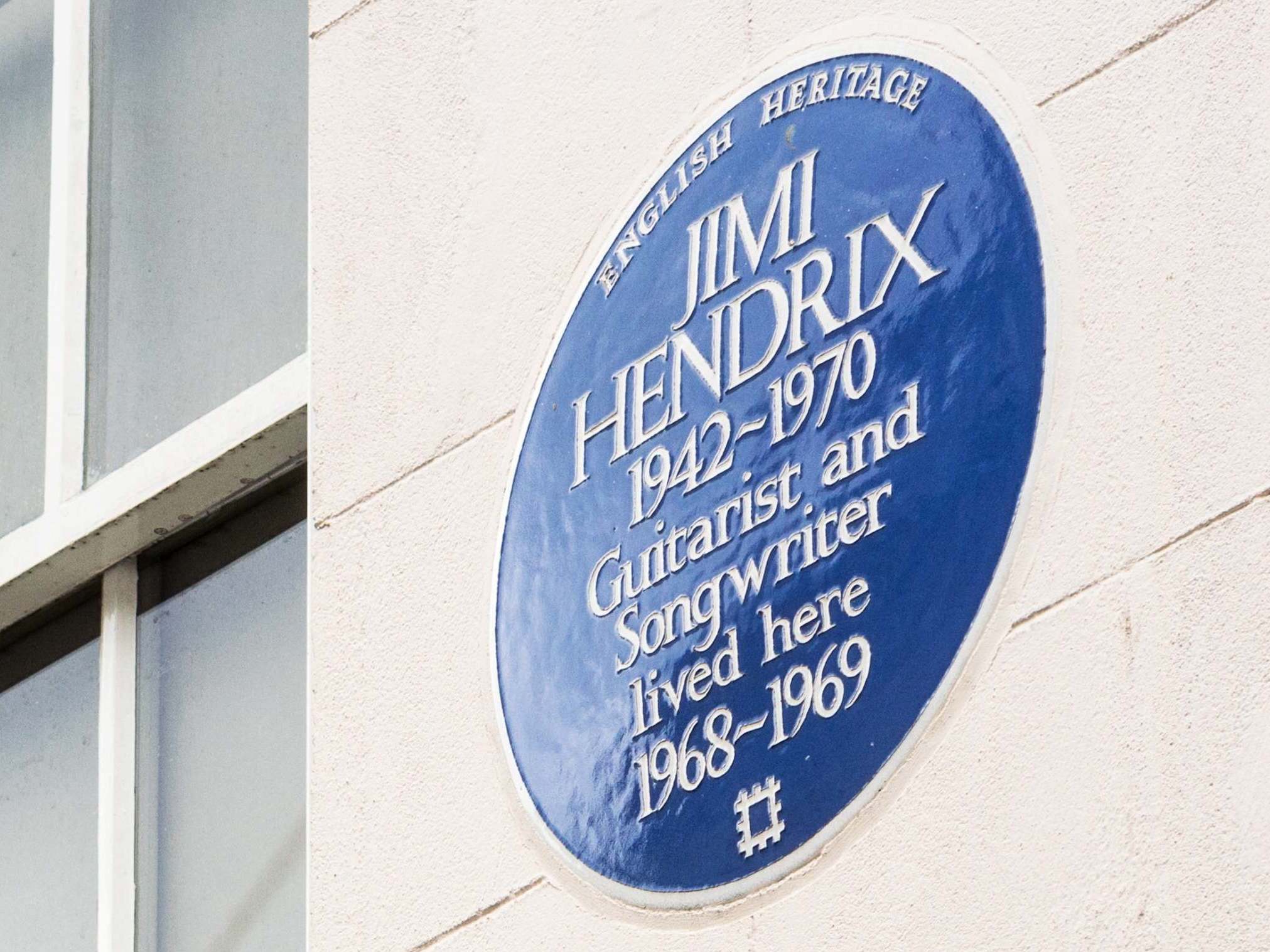
The caves in Bromley, Kent, date back to the 13th century and have been used for various purposes, including the cultivation of mushrooms, a bomb shelter during the Second World War, and, for some reason, a music venue during the 1950s and 1960s. Today, you can take a guided tour for £7.
The venues would get bigger following the UK release of the band’s first album, Are You Experienced?, in May 1967. It spent 33 weeks on the charts, reaching No 2.
The album’s cover, now a staple of psychedelic rock era art, included a fish-eyed lens photograph of the band, taken by Karl Ferris in Kew Gardens. The garden in southwest London claims to have the largest botanical collection in the world, and was named a Unesco World Heritage Site in 2003.
From there, the Tap on The Line pub is a short walk away, near the Kew Gardens tube station. “After the session, to celebrate, we walked across the road to an ancient Elizabethan pub and downed many ales and smoked joints in the garden. It was a good thing that we had a chauffeur to drive us back to London,” Ferris said of the pub, which then was known as the Flower and Firkin.
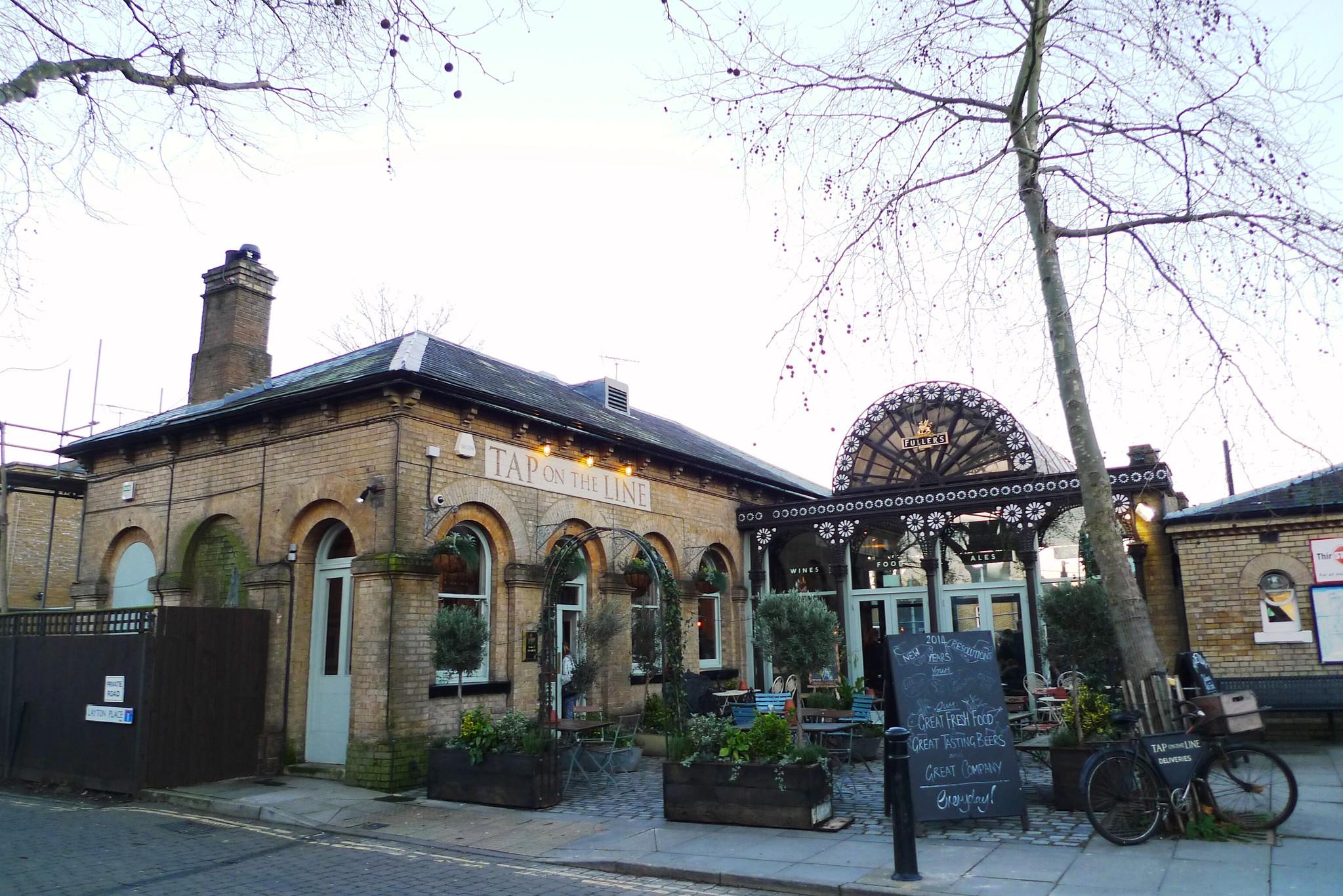
Another pub for Hendrix fans is The Ship on Wardour Street, close to where the Marquee Club once was. It remains a popular music-business hangout. “He would walk in there and recognise it instantly,” Lloyd says of Hendrix, had he shown up there today.
By the time Hendrix returned to London in July 1968, he was a major star. Etchingham chose a flat for the couple at 23 Brook St in Mayfair, where Hendrix would live for small bits of 1968 (between touring), but mainly during the first three months of 1969. The apartment was next door to where the composer Handel had resided well over 200 years prior, at 25 Brook St.
An unlikely pairing of giants
Today, both homes of the famed musicians are on display at Handel & Hendrix in London. The Hendrix portion opened in February 2016, the centrepiece being a restored version of the couple’s “bedsit”, made to look as it did in 1969. While technically a bedroom, it was the apartment’s main gathering place, where the couple partied with friends and Hendrix jammed with fellow musicians. He also hosted members of the media there for interviews.
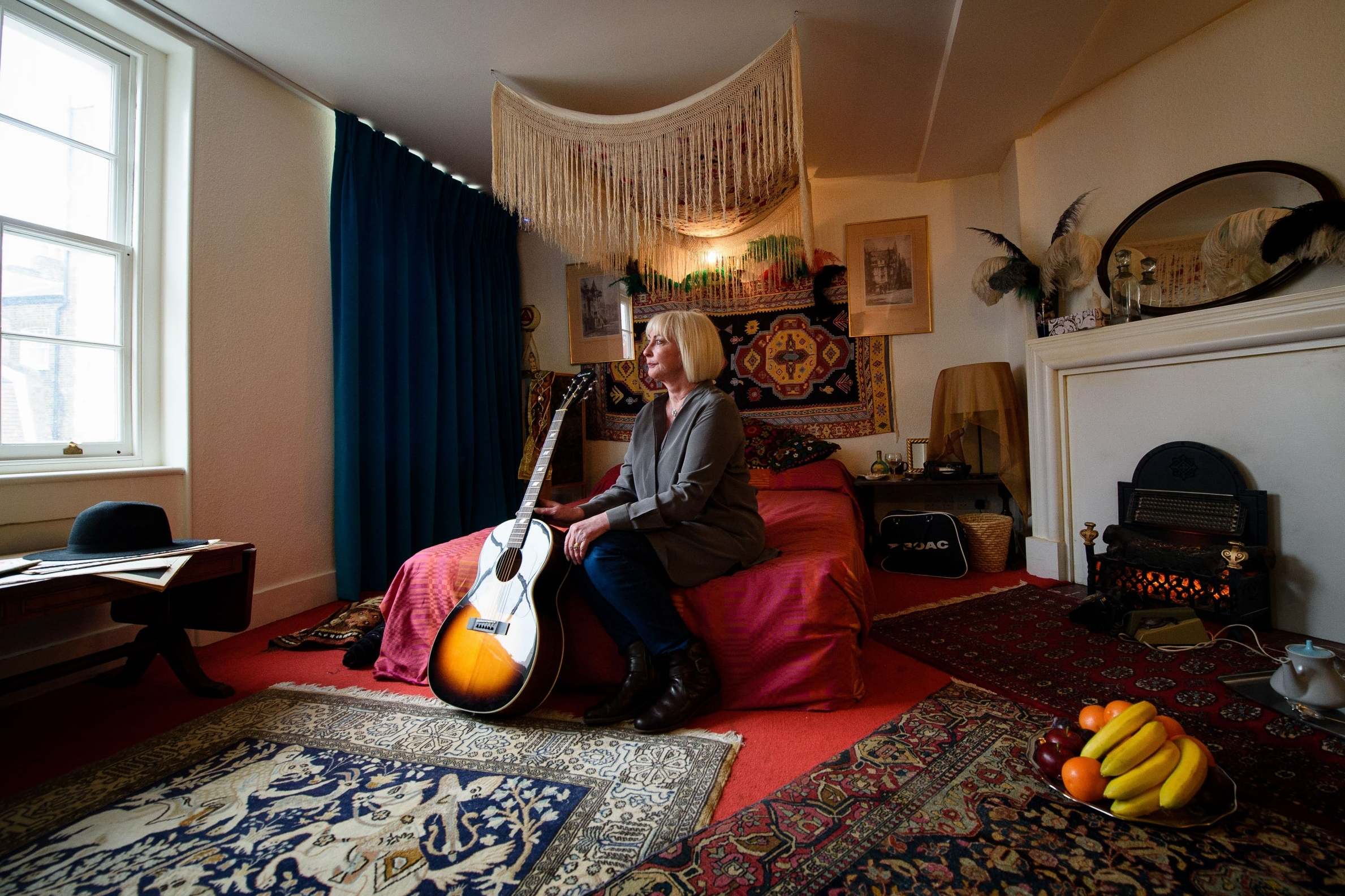
“He sat on the bed, holding forth and rolling joints,” Lloyd says. “What rockstar’s bedroom would you get into these days? You wouldn’t even get near the house.”
At first glance, the turquoise velvet curtains (originally purchased from John Lewis on nearby Oxford Street), red Persian rugs, Bohemian nicknacks and piles of vintage vinyl appear to be the actual artifacts, but almost all of the items in the room are replicas. Hendrix requested that most of his possessions be destroyed after the couple had separated for good later in 1969.
Thanks to Etchingham’s involvement and enough old photos to go by, replacement items were acquired through memorabilia auctions while others, like the pink-and-orange striped bedspread, were remade to match the originals.
“She was able to recollect an incredible amount of colours and textures that the black and white photographs couldn’t give us; gradually the room was restored back to its former glory,” Claire Davies, the museum’s deputy director, says. “She also had so many stories about Jimi’s brief moment of domesticity with her in the flat that helped to shape our narrative.”
Elsewhere in the exhibit, visitors can sift through a recreation of Hendrix’s record collection, mainly a mix of blues (Muddy Waters, Howlin’ Wolf) and rock (the Beatles, Bob Dylan and Cream).
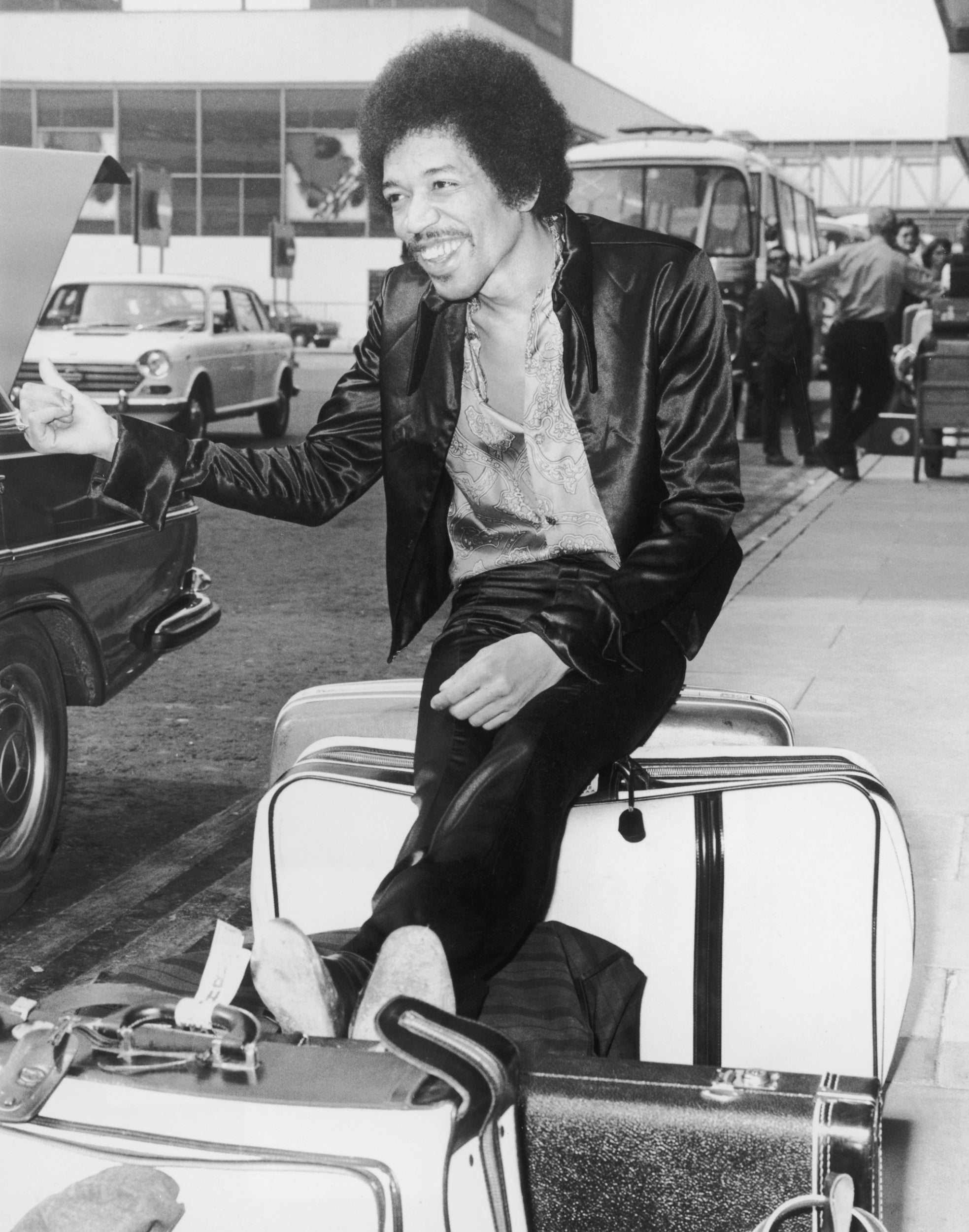
He did much of his record shopping at One Stop Records, known for its selection of American imports, across the road from his flat on South Molton Street. It’s no longer there, but Lloyd recommended Sounds of the Universe in Soho for a record shop that would fit Hendrix’s tastes.
The rock scene in Mayfair
Upscale Mayfair may have seemed like an odd area for a counterculture rockstar to live, but it drew many industry types, located as it was close to several clubs and studios. Venues that still exist include The Court (formerly Bag O’Nails) and The Scotch of St James on Mason’s Yard, where Hendrix and others of London’s rock elite performed and socialised, including members of the Beatles and The Who. While The Court is for members only, the blue plaque commemorating Hendrix’s first performance there can be viewed by anyone.
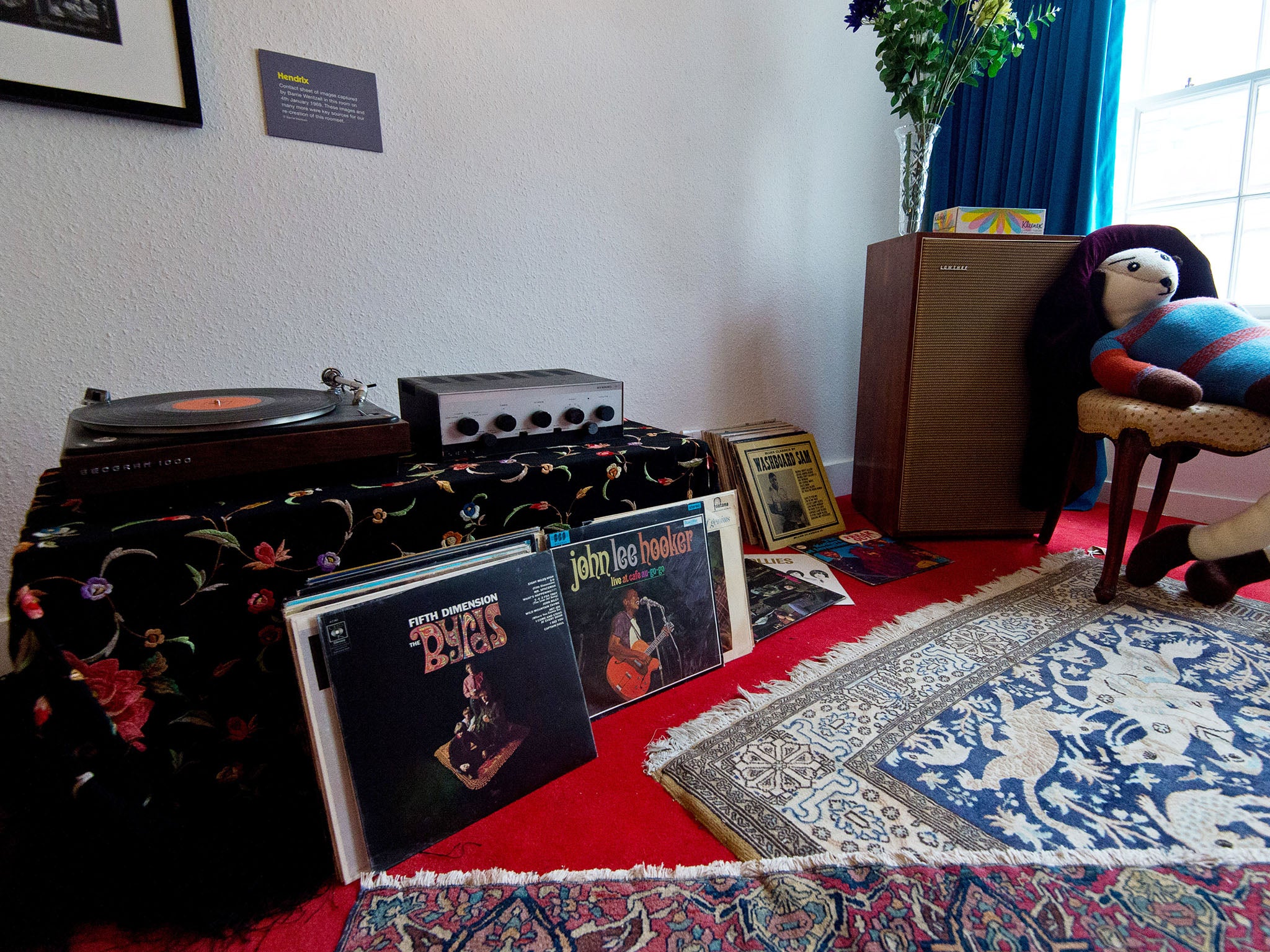
When it came to food, Mr Love, a restaurant located on the ground floor of the apartment building, was the go-to, with steak and chips a recurring order. Hendrix was not particularly fond of traditional English food.
“See, English food, it’s difficult to explain. You get mashed potatoes with just about everything, and I ain’t gonna say anything good about that,” Hendrix told Melody Maker.
When you think of how short his adult life was, it’s actually a fairly significant chunk. It’s also the part where it all starts going wrong for him in some way
While Mr Love is long gone, Hendrix also went for burgers at Wimpy Burger, a chain that originated in the United States in 1934 but became somewhat of an institution in the United Kingdom (depending on your tastes).
“It’s like an English person’s idea of what a burger is,” Lloyd says of Wimpy, which still has a few London locations. “If people really want to get a sense of what London was like then in terms of food, that is probably the best place to go.”
Ultimately, Hendrix’s time in Mayfair was short but significant.
“When you think of how short his adult life was, it’s actually a fairly significant chunk. It’s also the part where it all starts going wrong for him in some ways,” Lloyd says.
Hendrix’s career brought him back to the United States in March 1969. Etchingham joined him briefly, but Hendrix wouldn’t commit to moving back to London, so the couple split in April.
Shortly after, the Experience broke up as well, and while Hendrix continued performing, he never would put out another official studio album. His final major performance in England was in August 1970 at the Isle of Wight Festival, and on 18 September he was found dead of an apparent drug overdose in Room 507 of London’s Samarkand Hotel on Lansdowne Crescent.
While something may have kept bringing him back to London, there’s no telling if a roamer like Hendrix would have ever truly laid roots down, had he lived longer.
“I’m scared of vegetating,” Hendrix said. “I have to move on. I dig Britain, but I haven’t really got a home anywhere. The Earth’s my home.”
© New York Times
Join our commenting forum
Join thought-provoking conversations, follow other Independent readers and see their replies
Comments